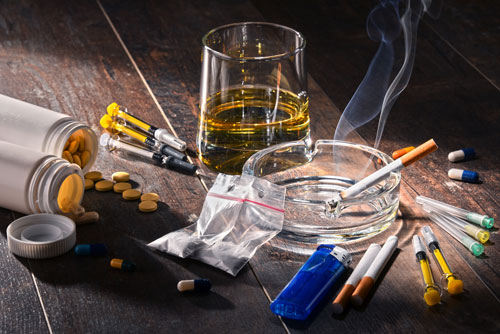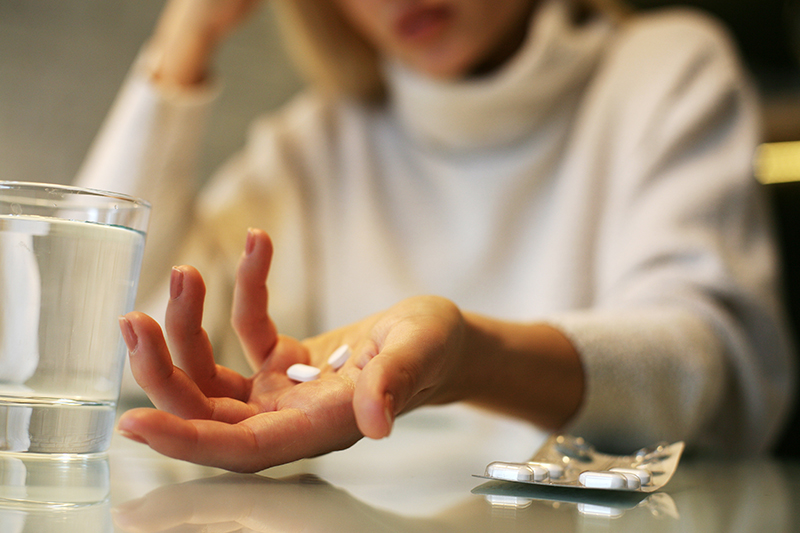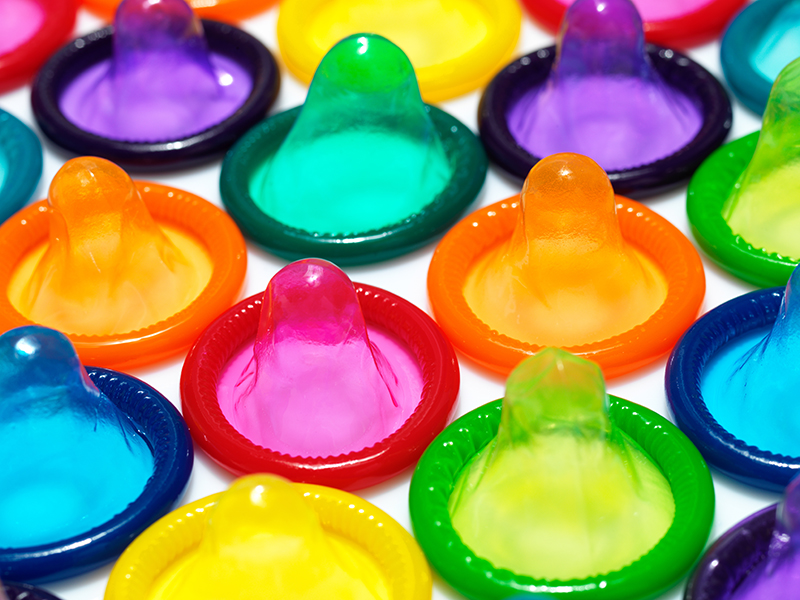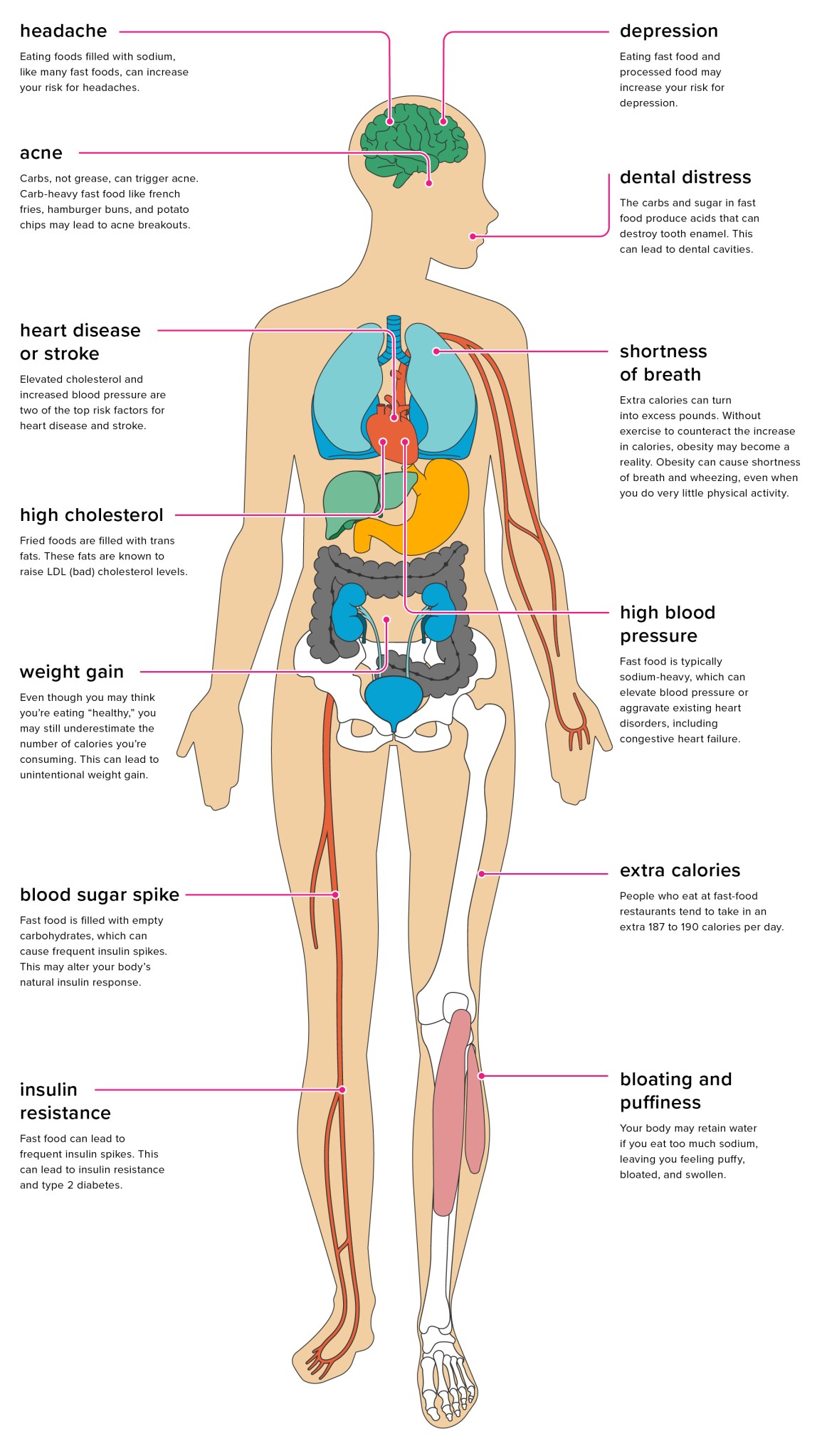



Many factors can positively or negatively contribute to an individual’s health and well-being.
Gall llawer o ffactorau gyfrannu at iechyd a llesiant unigolyn mewn ffyrdd cadarnhaol neu negyddol.
The level of the effect the factors can have on an individual will relate to the number of contributing factors involved.
These risk factors can have a direct impact on an individual’s health and well-being.
For example:
An individual who has inherited a genetic heart condition can live a healthy and good quality life if they make the right choices. These choices can be limited if other factors contribute, such as the economy and the environment they live in.
They cannot control the fact that they have the genetic condition or things like the economy or environment, but they can control their lifestyle such as what food they eat, the exercise they take, smoking and alcohol consumption.
Smoking and drinking large amounts of alcohol would inevitably increase the risks of an inherited heart condition on the general health and well-being of an individual.
Abstaining from smoking and alcohol combined with regular exercise and healthy eating could provide improved health and well-being.
Bydd lefel yr effaith y gall y ffactorau ei chael ar unigolyn yn gysylltiedig â nifer y ffactorau cyfrannol dan sylw.
Gall y ffactorau risg hyn gael effaith uniongyrchol ar iechyd a llesiant unigolyn.
Er enghraifft:
Gall unigolyn sydd wedi etifeddu cyflwr genynnol y galon fyw bywyd iach o ansawdd da drwy wneud y dewisiadau priodol. Gall y dewisiadau hyn fod yn gyfyngedig os bydd ffactorau eraill yn cyfrannu, megis yr economi a'r amgylchedd y mae'n byw ynddo.
Ni all reoli'r ffaith bod ganddo gyflwr genynnol na phethau fel yr economi neu'r amgylchedd, ond gall reoli ei ffordd o fyw, er enghraifft, pa fwyd y mae'n ei fwyta, pa ymarfer corff y mae'n ei wneud, p'un a yw'n ysmygu a faint o alcohol mae'n ei yfed.
Yn anochel, byddai ysmygu ac yfed symiau mawr o alcohol yn cynyddu'r risgiau sy'n gysylltiedig â chyflwr y galon a etifeddwyd ar iechyd a llesiant cyffredinol unigolyn.
Gallai peidio ag ysmygu nac yfed alcohol yn ogystal â gwneud ymarfer corff rheolaidd a bwyta'n iach wella iechyd a llesiant yr unigolyn.
Stranger Danger and Staying Safe Online
Dieithriaid Drwg ac aros yn ddiogel ar-lein

Stranger Danger is shorthand for the rules and safety tips children need to be taught about how to protect themselves from adult strangers, both in person and online.
Schoolbeat gives the following basic safety rules:
Further reading https://bit.ly/2JI4oAf
It is impossible for parents to monitor everything their children do online but they can put some rules in place to ensure that they are protected.
Create a poster telling children how to stay safe from strangers.
Dieithriad Drwg ('Stranger Danger' yn Saesneg) yw'r term a ddefnyddir ar gyfer y rheolau a'r awgrymiadau diogelwch y mae angen eu haddysgu i blant er mwyn iddynt wybod sut i amddiffyn eu hunain yn erbyn oedolion dieithr, yn bersonol ac ar-lein.
Mae Schoolbeat yn cynnig y rheolau diogelwch sylfaenol canlynol:
Deunydd darllen pellach https://bit.ly/2RcUSvX
Mae'n amhosibl i rieni fonitro popeth y mae eu plant yn ei wneud ar-lein ond gallant lunio rhai rheolau er mwyn sicrhau y cânt eu hamddiffyn.
Lluniwch boster yn dweud wrth blant sut i aros yn ddiogel rhag dieithriaid.

Road crashes are a major cause of death and injury with young drivers and passengers facing significant risks.
Danger from traffic is also a risk for children and young individuals when walking and cycling to school, to the park or to see friends.
Adults driving under the influence of alcohol or drugs is a major cause of death and injury on the roads. Alcohol and drugs decreases motor skills and reduces reaction time.
Safe playground equipment and adult supervision may help to reduce the risks of injury in the playground but children need to be taught how to be safe and act responsibly when playing.
For instance they should not push other children when climbing on equipment and should check that other children are not in the way before using slides or swings etc.
The law requires all children travelling in the front or rear seat of any car, must use the correct child car seat until they are either 135 cm in height or 12 years old (which ever they reach first). After this, they must use an adult seat belt.
Mae damweiniau ar y ffordd yn achosi nifer o farwolaethau ac anafiadau ac mae gyrwyr a theithwyr ifanc yn wynebu risgiau sylweddol.
Mae'r perygl sy'n gysylltiedig â thraffig hefyd yn risg i blant ac unigolion ifanc wrth gerdded a seiclo i'r ysgol, i'r parc neu i weld ffrindiau.
Mae oedolion sy'n gyrru o dan ddylanwad alcohol neu gyffuriau yn achosi nifer o farwolaethau ac anafiadau ar y ffyrdd. Mae alcohol a chyffuriau yn cael effaith andwyol ar sgiliau echddygol ac yn lleihau amseroedd ymateb.
Gall offer diogel ar yr iard chwarae a goruchwyliaeth gan oedolion helpu i leihau'r risgiau y caiff plant eu hanafu yn yr iard chwarae ond mae angen addysgu plant sut i fod yn ddiogel ac i ymddwyn yn gyfrifol wrth chwarae.
Er enghraifft, ni ddylent wthio plant eraill pan fyddant yn dringo ar offer a dylent edrych i wneud yn siŵr nad oes plant eraill yn y ffordd cyn defnyddio sleidiau neu siglenni ac ati.
Mae'r gyfraith yn ei gwneud yn ofynnol i bob plentyn sy'n teithio ym mlaen neu yng nghefn unrhyw gar ddefnyddio'r sedd car plentyn cywir hyd nes y bydd naill ai'n 135cm o daldra neu'n 12 oed (pa un bynnag sy'n digwydd gyntaf). Ar ôl hyn, rhaid iddynt ddefnyddio gwregys diogelwch oedolyn.

It is really important to think about sun protection for everyone from babies to elderly individuals.
These are the recommendations for staying safe in the sun:
Further reading https://bit.ly/2L5GXkF
Mae'n bwysig iawn ystyried amddiffyniad rhag yr haul i bawb, o fabanod i unigolion oedrannus.
Dyma'r argymhellion ar gyfer aros yn ddiogel yn yr haul:
Deunydd darllen pellach https://bit.ly/2L5GXkF

Researchers estimate that lack of exercise could be responsible for around one in ten cases of heart disease (10.5%) and just under one in five cases (18.7%) of colon cancer in the UK.
Source NHS https://bit.ly/2zA6XQ2
Lack of exercising can make the bones weak, muscles to waste away and can cause organs to malfunction. Individuals may gain weight, which might lead to one or more obesity-related medical conditions, such as diabetes or high blood pressure.
Mae ymchwilwyr yn amcangyfrif y gallai diffyg ymarfer corff fod yn gyfrifol am tua un o bob deg o'r achosion o glefyd y galon (10.5%) ac ychydig llai nag un o bob pum achos (18.7%) o ganser y colon yn y DU.
Ffynhonnell y GIG https://bit.ly/2zA6XQ2
Gall diffyg ymarfer corff achosi i'r esgyrn wanhau, i'r cyhyrau lacio a gall achosi diffygion o ran gweithrediad yr organau. Gall unigolion fagu pwysau, a allai arwain at un neu fwy o gyflyrau meddygol sy'n gysylltiedig â gordewdra, megis diabetes neu bwysedd gwaed uchel.

Obesity is a leading public health concern in Wales. Almost 60% of adults in Wales are currently overweight or obese. High Body Mass Index (BMI) is the largest identified contributor to Years Lived with Disability (YLD).
This is down to poor diet and lack of exercise. The Obesity Wales 2019 Report found that one in ten adults in Wales claimed they couldn’t afford to eat a balanced diet. The prevalence of obesity is 7% higher in adults eating no portions of fruit or veg compared to those eating five or more portions of fruit or veg.
Obesity can cause difficulties with day-to-day life:
More worryingly, obesity can also lead to health issues such as:
Obesity can also have an impact on mental well-being. An individual can suffer depression, lack of self-worth and isolation as they withdraw from society due to embarrassment about their weight.
In order to reduce the medical risks, individuals are encouraged to lose weight, through diet and exercise or through surgical procedure.
Mae gordewdra yn fater sy’n achosi pryder mawr o ran iechyd y cyhoedd yng Nghymru. Mae bron i 60% o oedolion Cymru dros bwysau neu’n ordew. Mae wedi’i nodi mai indecs màs y corff (BMI) uchel sy’n cyfrannu fwyaf at Flynyddoedd o Fyw gydag Anabledd (YLD: Years Lived with Disability).
Deiet gwael a diffyg ymarfer corff sy’n gyfrifol am hyn. Yn Adroddiad Gordewdra yng Nghymru 2019, canfuwyd bod un oedolyn o bob deg yng Nghymru yn honni nad yw’n gallu fforddio bwyta deiet cytbwys. Mae achosion o ordewdra 7% yn uwch mewn oedolion sydd ddim yn bwyta unrhyw ffrwythau na llysiau o gymharu â’r rhai sy’n bwyta pump dogn neu fwy o ffrwythau neu lysiau.
Gall gordewdra achosi anawsterau mewn bywyd o ddydd i ddydd:
Yn waeth byth, gall gordewdra achosi anawsterau iechyd hefyd, fel:
Gall hefyd effeithio ar lesiant meddyliol. Gall unigolyn ddioddef o iselder a diffyg hunan-werth, a theimlo’n ynysig wrth dynnu’n ôl o’r gymdeithas o ganlyniad i deimlo embaras am ei bwysau.
Er mwyn lleihau’r risgiau meddygol, mae unigolion yn cael eu hannog i golli pwysau, naill ai drwy ddeiet ac ymarfer corff neu drwy driniaeth lawfeddygol.

Drug abuse can include household products such as lighter fluid and solvents, as well as illegal drugs. The misuse of all these substances carry immediate health risks. Some substances can cause physical or psychological dependency. As a result, larger amounts are needed to get the same effect, and this often leads to long-term damage to the body. Overdoses can be fatal.
Individuals may experience the following physical and mental problems:
Addiction can have a negative impact on many areas of an individual’s life, including difficulties at work and at home, financial pressures and possible problems with the law if addiction leads to criminal activities or antisocial behaviour.
Drug driving is on the rise with 2,500 individuals stopped by the police in the three years up to 2018. Many feel that the risks of driving under the influence of drugs is not as risky as drink driving. However, research has shown that drug misuse lessens reaction time and affects concentration, which in turn increases the risk of a road traffic accident. Both the Welsh Government and Welsh police take drug driving very seriously and have launched a number of campaigns in recent years to raise awareness of the dangers. The introduction of ‘drugalysers’ to check for cocaine and cannabis after swabbing a suspect’s mouth, and blood tests used at the police station to check for ecstasy and heroin, have helped crack down on drug driving.
Gall camddefnyddio cyffuriau gynnwys camddefnyddio cynhyrchion yn y cartref fel hylifau cynnau a thoddyddion, yn ogystal â chyffuriau anghyfreithlon. Gall camddefnyddio’r holl sylweddau hyn achosi perygl uniongyrchol i iechyd unigolyn. Gall rhai sylweddau achosi dibyniaeth gorfforol neu seicolegol. O ganlyniad, bydd angen defnyddio mwy o’r cyffur i gael yr un effaith, ac yn aml iawn, bydd hyn yn arwain at ddifrod tymor hir i’r corff. Gall dos gormodol arwain at farwolaeth.
Efallai bydd unigolion yn profi’r problemau corfforol a meddyliol canlynol:
Gall caethiwed i gyffuriau gael effaith negyddol ar sawl agwedd ar fywyd unigolyn, gan gynnwys anawsterau yn y gwaith a gartref, pwysau ariannol a phroblemau posibl â’r gyfraith os yw caethiwed yn arwain at weithgareddau troseddol neu ymddygiad gwrthgymdeithasol.
Mae gyrru ar gyffuriau ar gynnydd. Cafodd 2,500 o unigolion eu stopio gan yr heddlu yn y tair blynedd hyd at 2018. Mae llawer yn teimlo nad yw gyrru ar gyffuriau mor beryglus ag yfed a gyrru. Fodd bynnag, mae gwaith ymchwil wedi dangos bod camddefnyddio cyffuriau yn lleihau amser ymateb pobl ac yn effeithio ar eu gallu i ganolbwyntio. Yn ei dro, mae hyn yn cynyddu’r perygl o ddamwain traffig ar y ffordd. Mae Llywodraeth Cymru a’r heddlu yng Nghymru yn cymryd gyrru ar gyffuriau o ddifrif. Maen nhw wedi lansio llawer o ymgyrchoedd yn ystod y blynyddoedd diwethaf i godi ymwybyddiaeth o’r peryglon. Drwy gyflwyno drugalysers i chwilio am gocên a chanabis ar ôl swabio ceg unigolyn sydd dan amheuaeth, a chynnal profion gwaed yng ngorsaf yr heddlu i chwilio am ecstasi a heroin, maen nhw wedi helpu i fynd i’r afael â phroblem gyrru ar gyffuriau.

Between 2005 and 2015 the prescribing of strong painkillers rose by 300% according to the BBC. These medications are highly addictive and can cause problems for the user both whilst they are taking the medicine (due to side effects), and also when they try to stop taking them. The withdrawal from these medicines can cause serious health problems.
Individuals will display the following behaviours if they are becoming addicted to prescription drugs:
An individual who is abusing prescription drugs may not be aware of how it impacts their appearance and their behaviour, but those around them will. The most visible symptoms may include:
Withdrawal from these types of medications can cause:
Yn ôl y BBC, bu cynnydd o 300% yn y cyffuriau lleddfu poen cryf a oedd yn cael eu rhoi ar bresgripsiwn rhwng 2005 a 2015. Mae’r meddyginiaethau hyn yn gaethiwus iawn a gallan nhw achosi problemau i’r defnyddiwr wrth iddo gymryd y meddyginiaethau (oherwydd sgil effeithiau), a hefyd pan fydd yn ceisio rhoi’r gorau i’w cymryd. Gall y symptomau diddyfnu (withdrawal symptoms) o ganlyniad i roi’r gorau i’r meddyginiaethau hyn, achosi problemau iechyd difrifol.
Bydd unigolyn yn ymddwyn fel a ganlyn os yw’n mynd yn gaeth i gyffuriau presgripsiwn:
Efallai na fydd unigolyn sy’n camddefnyddio cyffuriau presgripsiwn yn ymwybodol o’r ffordd mae hyn yn effeithio ar ei ymddangosiad a’i ymddygiad, ond bydd y bobl o’i amgylch yn sylwi. Gall y symptomau mwyaf gweladwy gynnwys:
Gall y symptomau diddyfnu sy’n deillio o roi’r gorau i’r mathau hyn o feddyginiaethau achosi:
Psychoactive substances can be known as ‘legal highs’ and are used as recreational drugs for their euphoric effects. They have been designed to replicate the effects of illegal drugs such as cannabis, ecstasy or cocaine.
Many users have mistakenly believed that as these substances are legal, they are safe. This is not the case and many have been linked to poisoning, emergency hospital admissions and, in some cases, deaths. The main issue with these substances is that the user can never be sure what they contain or how their body will react. The list of ingredients on the packaging may not always truly reflect the actual contents, as forensic testing has proven in the past.
There are different types of these substances, and their side effects will differ.
Enw arall ar sylweddau seicoweithredol yw ‘cyffuriau penfeddwol cyfreithlon’ (legal highs) ac maen nhw’n cael eu defnyddio fel cyffuriau adloniant (recreational drugs) am eu bod nhw’n cael effaith ewfforig ar y defnyddiwr. Maen nhw wedi’u creu i efelychu effeithiau cyffuriau anghyfreithlon fel canabis, ecstasi neu gocên.
Am fod y sylweddau hyn yn gyfreithlon, mae llawer o ddefnyddwyr yn camgymryd eu bod nhw’n ddiogel. Dydy hyn ddim yn wir, ac mae llawer ohonyn nhw wedi bod yn gysylltiedig â gwenwyno, derbyniadau brys i’r ysbyty a marwolaethau, mewn rhai achosion. Y brif broblem gyda’r sylweddau hyn yw na all y defnyddiwr fod yn siŵr beth sydd ynddyn nhw na sut bydd ei gorff yn adweithio. Efallai na fydd y rhestr gynhwysion ar y pecyn bob amser yn nodi’r union gynnwys, fel y mae profion fforensig wedi’i brofi yn y gorffennol.
Mae mathau gwahanol o’r sylweddau hyn ar gael, a bydd eu sgil effeithiau yn wahanol.

Alcohol is considered a socially acceptable ‘drug’ and is consumed by large numbers of adults when socialising. Moderate use is not a major problem, but many adults don’t understand what the safe limit is. The UK’s Chief Medical Advisor believes there is no safe limit and that the guidelines in place merely reduce the health risks rather than eliminate them. The only way to completely guard against the effects of alcohol is to cut alcohol out completely.
Current guidelines state that adults should drink no more than 14 units per week, which is equivalent to seven pints of average strength beer, or 14 single measures of spirits. These units should be spread evenly across the week and not saved up and drunk in one go. Expectant mothers shouldn’t drink alcohol at all as it increases the risk of problems during pregnancy and birth.
Binge drinking is a concern in Wales. In a recent survey, the Office for National Statistics (ONS) found that one in seven adults had consumed more than 14 units in a single day. Binge drinking can lead to:
The following health impacts are associated with long-term alcohol consumption:
Alcohol can also affect an individual’s well-being. Public Health Wales claims that those from the most deprived backgrounds are more affected by alcohol-related problems than the rest of the population. They also found that alcohol is associated with more than 6,000 domestic abuse cases each year. Heavy drinking can also increase the risk of unemployment or problems at work, as well as relationship and family problems.
Mae alcohol yn cael ei ystyried yn ‘gyffur’ sy’n dderbyniol yn gymdeithasol, ac mae llawer iawn o oedolion yn ei yfed wrth gymdeithasu. Dydy defnydd cymedrol ddim yn broblem fawr, ond dydy llawer o oedolion ddim yn deall lle mae’r terfyn diogel. Mae Prif Gynghorydd Meddygol y DU o’r farn nad oes terfyn diogel. Dim ond lleihau’r risgiau i iechyd, yn hytrach na’u dileu, y mae’r canllawiau sydd ar waith ar hyn o bryd. Yr unig ffordd o atal effeithiau alcohol yn gyfan gwbl yw peidio ag yfed alcohol o gwbl.
Mae’r canllawiau cyfredol yn nodi na ddylai oedolion yfed mwy na 14 uned yr wythnos, sydd gyfwerth â saith peint o gwrw o gryfder cyffredin, neu 14 mesur sengl o wirod. Dylai pobl yfed yr unedau hyn dros yr wythnos gyfan, yn hytrach na’u cadw i’w hyfed ar yr un pryd. Ddylai mamau beichiog ddim yfed alcohol o gwbl, oherwydd byddai’n cynyddu’r risg o broblemau yn ystod beichiogrwydd a genedigaeth.
Mae goryfed mewn pyliau (binge drinking) yn destun pryder yng Nghymru. Mewn arolwg diweddar, roedd y Swyddfa Ystadegau Gwladol wedi canfod bod un oedolyn o bob saith wedi yfed mwy na 14 uned mewn un diwrnod. Gall goryfed mewn pyliau arwain at y canlynol:
Mae’r effeithiau canlynol ar iechyd yn gysylltiedig ag yfed alcohol dros gyfnod hir o amser:
Gall alcohol effeithio ar lesiant unigolyn hefyd. Mae Iechyd Cyhoeddus Cymru yn honni bod problemau sy’n gysylltiedig ag alcohol yn cael fwy o effaith ar bobl o’r cefndiroedd mwyaf difreintiedig na gweddill y boblogaeth. Canfuwyd hefyd bod alcohol yn gysylltiedig â dros 6,000 o achosion o gam-drin domestig bob blwyddyn. Gall yfed yn drwm arwain at ddiweithdra hefyd, neu broblemau yn y gwaith, yn ogystal â phroblemau mewn perthynas ac yn y teulu.
Smoking is the biggest cause of death or illness in the UK.
It can cause several types of cancer including lung cancer, throat cancer and oesophageal cancer.
It can also damage the heart leading to heart attack or stroke.
Passive smoking can also cause serious harm.
Children exposed to passive smoking are at increased risk of chest infections, meningitis, persistent coughs and asthma, ear infections and even cot death.
Ysmygu yw'r ffactor mwyaf sy'n achosi marwolaeth neu salwch yn y DU.
Gall achosi sawl math o ganser, gan gynnwys canser yr ysgyfaint, canser y gwddf a chanser oesoffagaidd.
Gall hefyd niweidio'r galon gan arwain at drawiad ar y galon neu strôc.
Gall ysmygu goddefol hefyd achosi niwed difrifol.
Mae plant a gaiff eu hamlygu i ysmygu goddefol yn fwy tebygol o ddatblygu heintiau ar y frest, llid yr ymennydd, peswch parhaus ac asthma, heintiau yn y glust ac hyd yn oed farwolaeth yn y crud.
Whilst it’s perfectly normal for young people to explore their sexuality, it can lead to risky behaviour and unsafe practices. It’s important that their sexual health is considered as important as their physical health, and is supported as such.
Sexual health is not just about birth control and protection from sexually transmitted diseases; it’s about making positive choices that support an individual’s emotional, physical and social well-being. Young adults aren’t emotionally developed enough to be able to cope with the negative aspects of sexual relationships. If they are coerced into sexual activity before they feel ready, it can lead to significant emotional problems.
To protect their sexual health, NHS Wales recommends that an individual should:
Er ei bod yn gwbl arferol i bobl ifanc arbrofi â’u rhywioldeb, gallai hyn arwain at ymddygiad peryglus ac arferion anniogel. Mae’n bwysig bod eu hiechyd rhywiol yn cael ei ystyried yr un mor bwysig â’u hiechyd corfforol, a’i fod yn cael ei gefnogi yn yr un modd.
Mae iechyd rhywiol yn ymwneud â mwy na dim ond atal cenhedlu a diogelu rhag clefydau cysylltiad rhywiol; mae’n golygu gwneud dewisiadau cadarnhaol sy’n cefnogi llesiant emosiynol, corfforol a chymdeithasol unigolyn. Dydy oedolion ifanc ddim wedi datblygu digon yn emosiynol i ymdopi â’r agweddau negyddol ar berthnasoedd rhywiol. Os ydyn nhw’n cael eu gorfodi i mewn i weithgarwch rhywiol cyn iddyn nhw deimlo’n barod, gall arwain at broblemau emosiynol difrifol.
I ddiogelu ei iechyd rhywiol, mae GIG Cymru yn argymell y dylai unigolyn wneud y canlynol:

STDs are very common. The majority are transmitted during intercourse and oral sex, so condoms offer the best protection.
Chlamydia is the most common STD diagnosed in Wales, affecting more young adults than any other section of the population. Chlamydia presents few obvious symptoms, so the young person may not always realise they have an infection unless they get tested. Untreated, chlamydia can cause infertility.
Genital warts are small fleshy lumps or skin changes around the genital or anal area and are also very common. These warts have been linked to cervical cancer, so to protect against this, all girls in Year 8 are now offered the HPV vaccine which protects against around 90% of genital warts.
Genital herpes is highly contagious and is common among 20–24 year olds. It causes painful blisters. It can’t be completely cured, only controlled with antiviral medication.
Syphilis can be overlooked by the individual as the sores it presents may be painless. However, if left untreated this STD can damage the heart, brain or nervous system.
HIV can also go undetected; almost 1 in 4 individuals with HIV don’t know they have it. If treated early, the individual can go on to lead a healthy life. However, if left untreated it can affect the immune system’s ability to protect against life-threatening illnesses.
Gonorrhoea is the second most common STD and can lead to infertility if left untreated.
Contraception is a personal choice and very much depends on whether an individual wishes to have children. Popular forms of contraception include:
Mae clefydau cysylltiad rhywiol yn gyffredin iawn. Mae’r mwyafrif yn cael eu trosglwyddo yn ystod cyfathrach rywiol a rhyw geneuol, felly condomau yw’r ffordd orau o’ch diogelu eich hun rhagddyn nhw.
Clamydia yw’r clefyd cysylltiad rhywiol mwyaf cyffredin yng Nghymru. Mae’n effeithio ar fwy o oedolion ifanc nag unrhyw ran arall o’r boblogaeth. Dydy clamydia ddim yn cyflwyno llawer o symptomau amlwg, felly efallai na fydd unigolyn ifanc bob amser yn sylweddoli bod haint ganddo oni bai ei fod yn cael prawf. Heb ei drin, gall clamydia achosi anffrwythlondeb.
Lympiau bach neu newidiadau i’r croen o amgylch yr ardal cenhedlu neu ardal yr anws yw dafadennau organau cenhedlu, ac maen nhw’n gyffredin iawn hefyd. Mae’r dafadennau hyn wedi cael eu cysylltu â chanser gwddf y groth, felly i ddiogelu rhag hyn, mae pob merch ym Mlwyddyn 8 bellach yn cael cynnig brechlyn HPV sy’n diogelu yn erbyn tua 90% o ddafadennau organau cenhedlu.
Mae herpes yr organau rhywiol yn glefyd cyffwrdd-ymledol (contagious), ac mae’n gyffredin ymhlith pobl 20–24 oed. Mae’n achosi pothelli poenus. Does modd ei wella’n llwyr, dim ond ei reoli â meddyginiaeth gwrthfirol.
Efallai y bydd unigolyn yn anwybyddu syffilis oherwydd dydy’r briwiau sy’n symptom o’r clefyd ddim o reidrwydd yn boenus. Fodd bynnag, os na chaiff ei drin, gall y clefyd cysylltiad rhywiol hwn niweidio’r galon, yr ymennydd neu’r system nerfol.
Gall fod yn anodd sylwi ar HIV hefyd; mae bron i 1 unigolyn o bob 4 sydd â HIV yn anymwybodol bod ganddo’r clefyd. Os yw’n cael ei drin yn gynnar, gall yr unigolyn fyw bywyd iach. Ond os yw’n cael ei adael heb ei drin, gall effeithio ar allu’r system imiwnedd i ddiogelu yn erbyn afiechydon sy’n peryglu bywyd.
Gonorrhoea yw’r ail glefyd cysylltiad rhywiol fwyaf cyffredin, a gall arwain at anffrwythlondeb os na chaiff ei drin.
Mae atal cenhedlu yn ddewis personol, ac mae’n dibynnu i raddau helaeth ar a yw unigolyn yn dymuno cael plant ai peidio. Mae dulliau poblogaidd o atal cenhedlu yn cynnwys:

It isn’t unusual for a young person to be confused about their sexual identity. This can lead to issues with self-image, especially if they feel at odds with their family’s expectations. It’s important to support them to be themselves and help them know where to go if they need additional support. They might identify as one of the following.
Gay, lesbian or bisexual – these individuals might be subject to discrimination and abuse. In response to this, depression is twice as likely and anxiety 1.5 times more likely compared to heterosexual individuals. Gay, lesbian and bisexual individuals are also more likely to suffer social isolation, self-harm and suicidal thoughts.
Transgender – the hostility, stigma, discrimination and social rejection sometimes faced by transgender individuals can have a negative impact on their mental health and wellbeing. The World Health Organisation (WHO) states that transgender individuals are 49 times more likely to contract HIV. They attribute this to the stigma around their sexual identity, preventing them from seeking sexual health checks.
Heterosexual – even though these individuals don’t face the same type of discrimination as other sexual identities, they are still at risk of suffering anxiety and depression if they don’t look after their emotional sexual health. They are also at risk of damaging their physical health if they don’t practice safe sex.
Nid yw’n anarferol i unigolyn ifanc deimlo’n ddryslyd ynglŷn â’i hunaniaeth rywiol. Gall hyn arwain at broblemau gyda hunanddelwedd, yn enwedig os yw’n teimlo ei fod yn mynd yn groes i ddisgwyliadau ei deulu. Mae’n bwysig ei gefnogi iddo allu teimlo’n gyfforddus ynddo’i hun, a’i helpu i wybod lle mae cefnogaeth ychwanegol ar gael iddo. Efallai y bydd yn ei ddiffinio ei hun fel un o’r canlynol.
Hoyw, lesbiaidd neu ddeurywiol – efallai bod pobl yn gwahaniaethu yn erbyn yr unigolion hyn, neu’n eu cam-drin. O ganlyniad, maen nhw ddwywaith yn fwy tebygol o ddioddef iselder, a 1.5 gwaith yn fwy tebygol o ddioddef gorbryder nag unigolion heterorywiol. Mae unigolion hoyw, lesbiaidd a deurywiol hefyd yn fwy tebygol o deimlo’n ynysig, hunan-niweidio ac ystyried hunanladdiad.
Trawsrywiol – gall yr elyniaeth, y stigma, y gwahaniaethu a’r gwrthod cymdeithasol y mae unigolion trawsrywiol weithiau’n ei wynebu gael effaith negyddol ar eu hiechyd meddwl a’u llesiant. Mae Sefydliad Iechyd y Byd yn nodi bod unigolion trawsrywiol 49 gwaith yn fwy tebygol o ddal HIV. Maen nhw’n credu mai’r stigma sy’n gysylltiedig â’u hunaniaeth rywiol sy’n gyfrifol am hyn, gan eu hatal rhag mynd am brofion iechyd rhywiol.
Heterorywiol – er nad yw’r unigolion hyn yn wynebu’r un math o wahaniaethu â hunaniaethau rhywiol eraill, maen nhw’n dal mewn perygl o ddioddef gorbryder ac iselder os nad ydyn nhw’n gofalu am eu hiechyd rhywiol emosiynol. Maen nhw hefyd mewn perygl o niweidio eu hiechyd corfforol os nad ydyn nhw’n bod yn ddiogel wrth gael rhyw.
Unhealthy eating habits include not having enough of the healthy foods an individual needs each day. Consuming too many food and drink which are low in fibre or high in fat, salt and/or sugar constitutes as unhealthy eating habits.
A poor diet can lead to reduced immunity, increased risk of disease, impaired physical and mental development, and reduced productivity.
With individuals leading busy lives, there can be an over reliance on fast foods and these can lead to a range of problems which can include:

Source: Healthline https://bit.ly/2gycAFi
Mae arferion bwyta afiach yn cynnwys peidio â chael digon o'r bwydydd iach y mae eu hangen ar unigolyn bob dydd. Mae bwyta ac yfed gormod o fwyd a diod sy'n isel mewn ffibr neu'n uchel mewn braster, halen a/neu siwgr yn golygu arferion bwyta afiach.
Gall deiet gwael arwain at lai o imiwnedd, mwy o risg o glefyd, diffyg datblygiad corfforol a meddyliol, a llai o gynhyrchedd.
Gydag unigolion yn arwain bywydau prysur, gellir dibynnu'n ormodol ar fwydydd cyflym a gall y rhain arwain at amrywiaeth o broblemau a all gynnwys:

Ffynhonnell: Healthline https://bit.ly/2gycAFi
Sort the statements into the correct column.
Cyfarwyddiadau cyflwyno gweithgareddau.